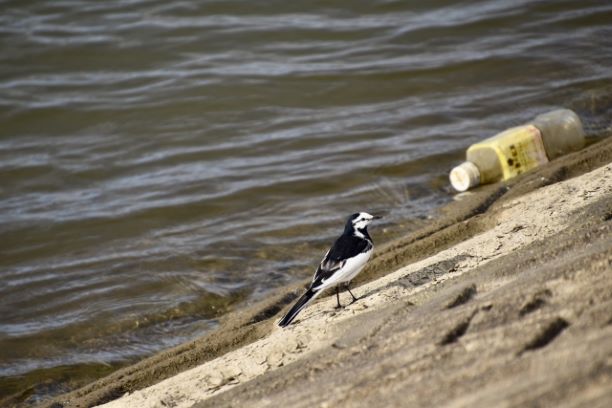目次
Claim for damages for mountain climbing accidents
Request outside the lawsuit
In principle, if all or part of the cause of the death or injury accident at the time of mountain climbing is considered to be the negligence of another person and the other person is legally liable, the other person shall be liable for damages (hereinafter referred to as the “person obliged to compensate for damages” for the mountain climbing accident).
In such a case, if the mountain climbing accident is an injury accident, the distressed person himself/herself will mainly claim compensation from the person obliged to compensate for the damage if the accident is a death accident (hereinafter referred to as the “person claiming compensation”). If the accident is a death accident, the heir of the distressed person will mainly claim compensation from the person obligated to compensate for the damage (hereinafter referred to as the “person claiming compensation”).
Normally, the person requesting compensation (or his/her attorney at law) will request that the person obliged to compensate voluntarily pay compensation for damages (non-litigation request).
At this point, if the discussion is concluded, the amount agreed upon will be paid from the obligor to the claimant.
On a judicial request
On the other hand, if the discussion is incomplete at this stage, the claimant may institute a lawsuit against the person obliged to compensate for the damages in some cases.
However, even if a lawsuit is filed, a settlement may be concluded before the judgment, or even if a judgment is rendered in the first instance, an appeal may be filed, leading to a settlement in the appeal trial.
In this way, in the case of an accident in which the problem of compensation for damages was resolved through discussions between the parties or through settlement prior to the judgment of the first instance, the amount of compensation will not be publicly announced in general.
Therefore, we will examine some of the cases in which a claim for compensation for damages was granted in the mountain climbing accident in which the judgment was made, and the amount of damage and the amount of compensation for damages in the accident in which the judgment letter was publicly announced.
In principle, the amount of damage allowed in the appeal court will be examined for the case appealed to the court of second instance. In addition, the amount accepted by the court of first instance shall be examined for cases in which the appeal was filed but the appeal court of second instance was not rendered. If, at the conclusion of the oral argument of the trial, some damages have been compensated for by payment of insurance benefits, public service accident compensation, etc., the judgment will order the person obliged to compensate for damages to pay the amount obtained by deducting said amount from the recognized amount of damages, so the total amount of the recognized amount of damages (after negligence set-off) may differ from the amount of damages accepted in the main sentence of the judgment.
In this section, the term “mountain climbing” is used to refer to an accident involving a person who entered a mountain for the purpose of climbing a mountain, but the outer edge of the term “mountain climbing” is unclear, so it does not necessarily agree with the data on the mountain climbing accident in other documents.
Case where a claim for compensation for damages has been granted
Summary
Up to now, the number of mountain climbing accidents for which a claim for compensation for damages was granted in the court was 11 (9) and 18 (16) victims (deaths in parentheses). The number of fatal accidents and the number of distressed persons do not agree with the number of fatal accidents, because there are two trials of fatal accidents in which the heirs of multiple distressed persons become the plaintiffs.
In one accident, the heirs of several distressed persons in the same accident filed suits in two groups, and the number of trials was 12, and the number of cases was allowed to be claimed for damages.
Damage Items and Acceptance Amount
Details of the damages recognized in the judgment include (i) treatment-related expenses, (ii) lost profits, (iii) compensation, (iv) funeral and burial-related expenses, and (v) attorneys’ fees. There are six negligent offenses (only one out of a plurality of victims).
In terms of damage items,
(i) Treatment-related costs are recognized in one of two accidents.
(ii) The loss profit is calculated in the same manner as in the case of a claim for compensation for damages in a general accident involving personal injury, such as a traffic accident, and there is little peculiarity in the case of a mountain climbing accident.
(iii) In the case of a fatal accident, in addition to the intrinsic compensation of the victim, the intrinsic compensation of the victim and the intrinsic compensation of the relatives of the victim, such as heirs, are often accepted. For accidents that have occurred since 1998, the total amount of the intrinsic compensation for the victim and the relatives is 20 million yen to 30 million yen. In some cases, the number of heirs (parents) who have become plaintiffs and the total amount of allowances allowed for multiple victims in the same accident may differ depending on the attributes of the victims.
(iv) Funeral and burial expenses are partially charged for most fatal accidents.
(v) The attorney’s fees are recognized as damages for the remuneration actually paid by the plaintiff to the attorney-in-law (part of the remuneration).
Negotiation of negligence
Of the 12 cases, 20-70% of the six cases were recognized as negligent offenses.
When calculating the amount of damages due to negligence settlement, in recent trials, the amount obtained by deducting the percentage of negligence settlement of the total amount from the total amount of the recognized damages of (i) to (iv) excluding attorneys’ expenses is calculated by adding (i) the total amount of attorneys’ expenses) × the percentage of negligence settlement + attorneys’ expenses.
However, in some older cases, the percentage of negligent offenses is deducted only for lost profits, and all damages, including attorneys’ fees, are deducted for the percentage of negligent offenses.
However, while the method of calculating lost profits has been formulated to a certain extent, the court’s discretion works to determine the amount of other damages, such as compensation and attorneys’ fees. Therefore, such differences in the method of calculating lost profits may have little impact on the amount of the final claim for damages.


















